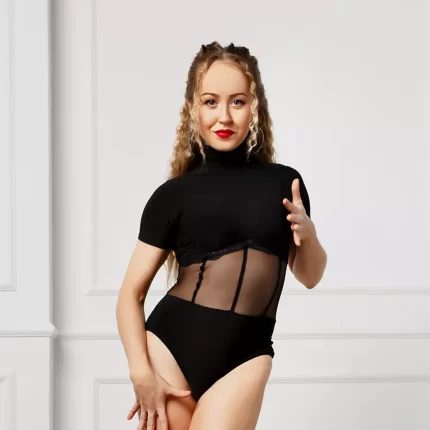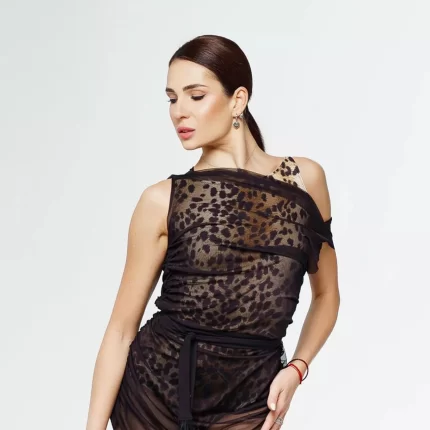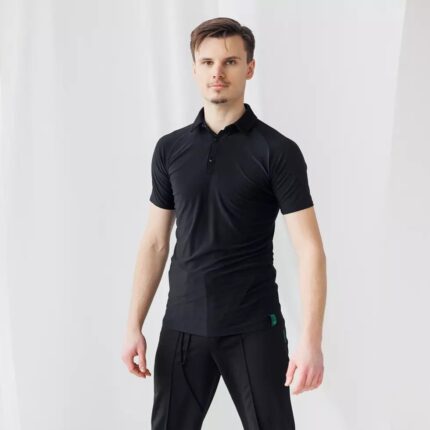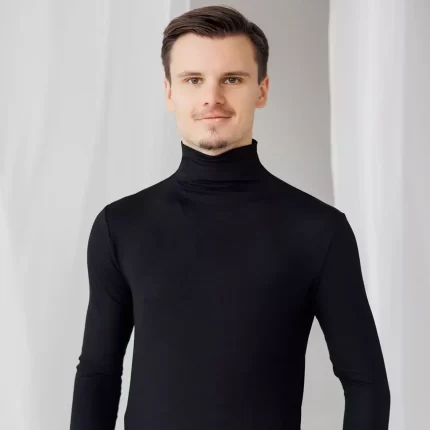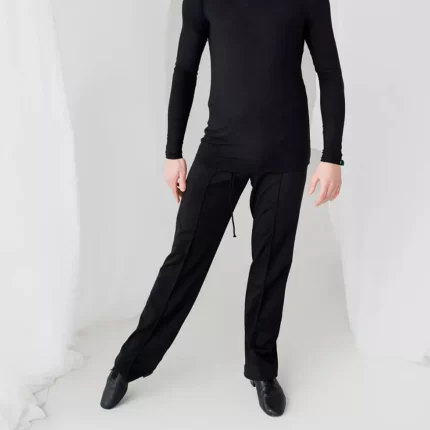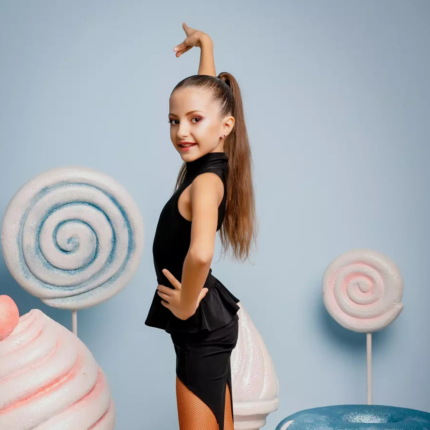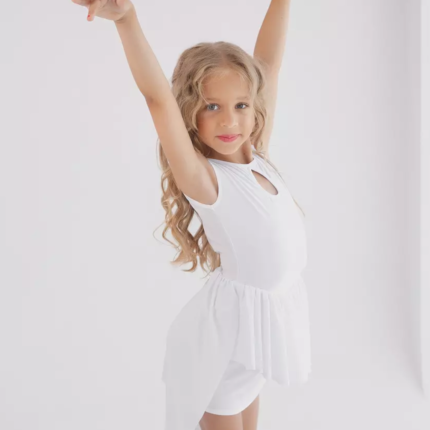Table of Contents
Introduction
Whether you’re taking your first dance class or are a seasoned performer, having the right practice dance wear is essential for a successful and enjoyable training experience. But what exactly should you wear to dance practice? This guide breaks down the essentials of practice dance wear, helping you build a functional wardrobe that prioritizes comfort, support, and freedom of movement. From essential dancewear pieces like leotards and tights to versatile layering options, we’ll cover what to consider when choosing your dance practice outfits. Let’s explore the key elements of practice dance wear and set you up for success in every class and rehearsal!
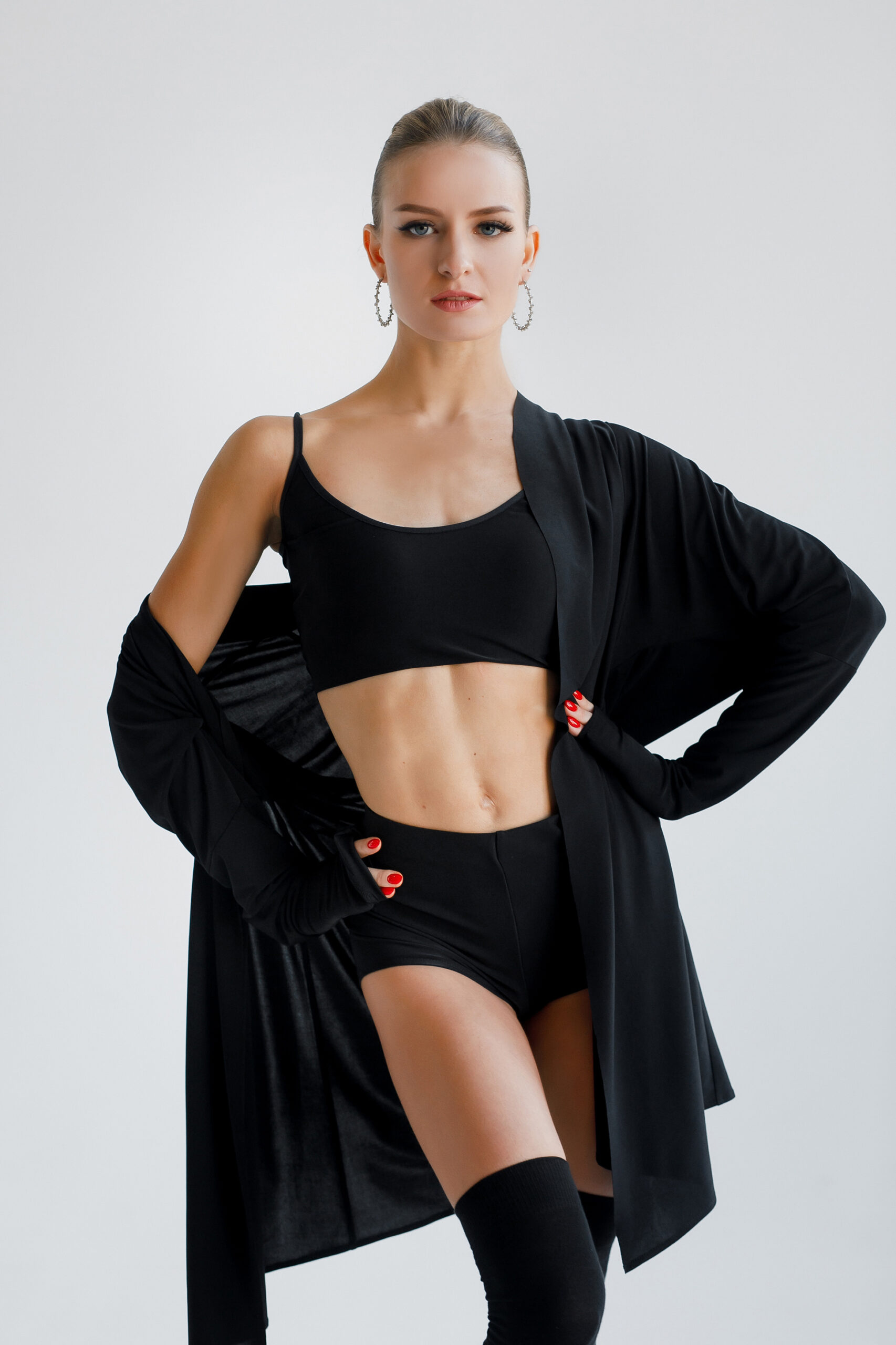
Section 1: Why is Practice Wear Important?
You might be tempted to throw on any old t-shirt and leggings for dance practice, but the truth is, your clothing choices can significantly impact your performance and overall experience. This section explores why choosing the right practice dance wear is so important. It’s not just about looking the part; it’s about creating an environment for optimal training by ensuring comfortable movement, unrestricted dance practice, and proper temperature regulation. Let’s delve into the reasons why dedicated practice dance wear is a worthwhile investment for dancers of all levels.
1.1 Freedom of Movement
One of the primary reasons why dedicated practice dance wear is so important is the freedom of movement it provides. Unlike regular street clothes, dancewear is designed to move with your body, allowing you to execute steps, stretches, and combinations without feeling restricted.
Here’s how the right practice wear ensures comfortable movement:
- Stretch fabrics: Dancewear is typically made from materials like lycra, spandex, and other blends that offer exceptional stretch and recovery. This allows for a full range of motion, whether you’re reaching for a high arabesque or dropping into a deep plié.
- Strategic seams: The seams in dancewear are often placed in areas that minimize friction and maximize flexibility. Flatlock seams, for example, lie flat against the skin, preventing irritation and chafing.
- Proper fit: Dancewear should be snug but not constricting. It should move with your body like a second skin, providing support without hindering your movements.
Avoiding distractions during practice is crucial for maximizing your learning and performance. Clothing that bunches, rides up, or restricts your movement can be incredibly distracting, pulling your focus away from your technique and the instructions of your teacher.
At Fashion Dance, we understand the importance of unrestricted dance practice. Our practice wear is designed with movement in mind, utilizing high-quality stretch fabrics and thoughtful construction to ensure you can dance freely and confidently, without any limitations from your clothing.
1.2 Staying Cool and Dry
Dance is a physically demanding activity, and staying cool and dry during practice is essential for both comfort and performance. The right practice dance wear plays a crucial role in regulating your body temperature and managing moisture, allowing you to focus on your technique without the distraction of being hot and sweaty.
Breathable fabrics are key to staying comfortable during dance practice. Materials like:
- Mesh: Allows for maximum ventilation, keeping you cool even during intense workouts.
- Cotton blends: Offer breathability while also providing some moisture-wicking properties.
- Performance fabrics: Specifically designed for athletic wear, these often incorporate blends of synthetic fibers that are both breathable and moisture-wicking.
Moisture-wicking materials are another crucial element of effective practice dance wear. These fabrics pull sweat away from your skin and transport it to the surface, where it can evaporate quickly. This helps to keep you dry and prevents the uncomfortable, clammy feeling that can occur when sweat is trapped against your skin.
By incorporating breathable and moisture-wicking fabrics into their designs, companies like Fashion Dance create dancewear that helps you maintain a comfortable temperature regulation throughout your practice, so you can stay focused and perform at your best.
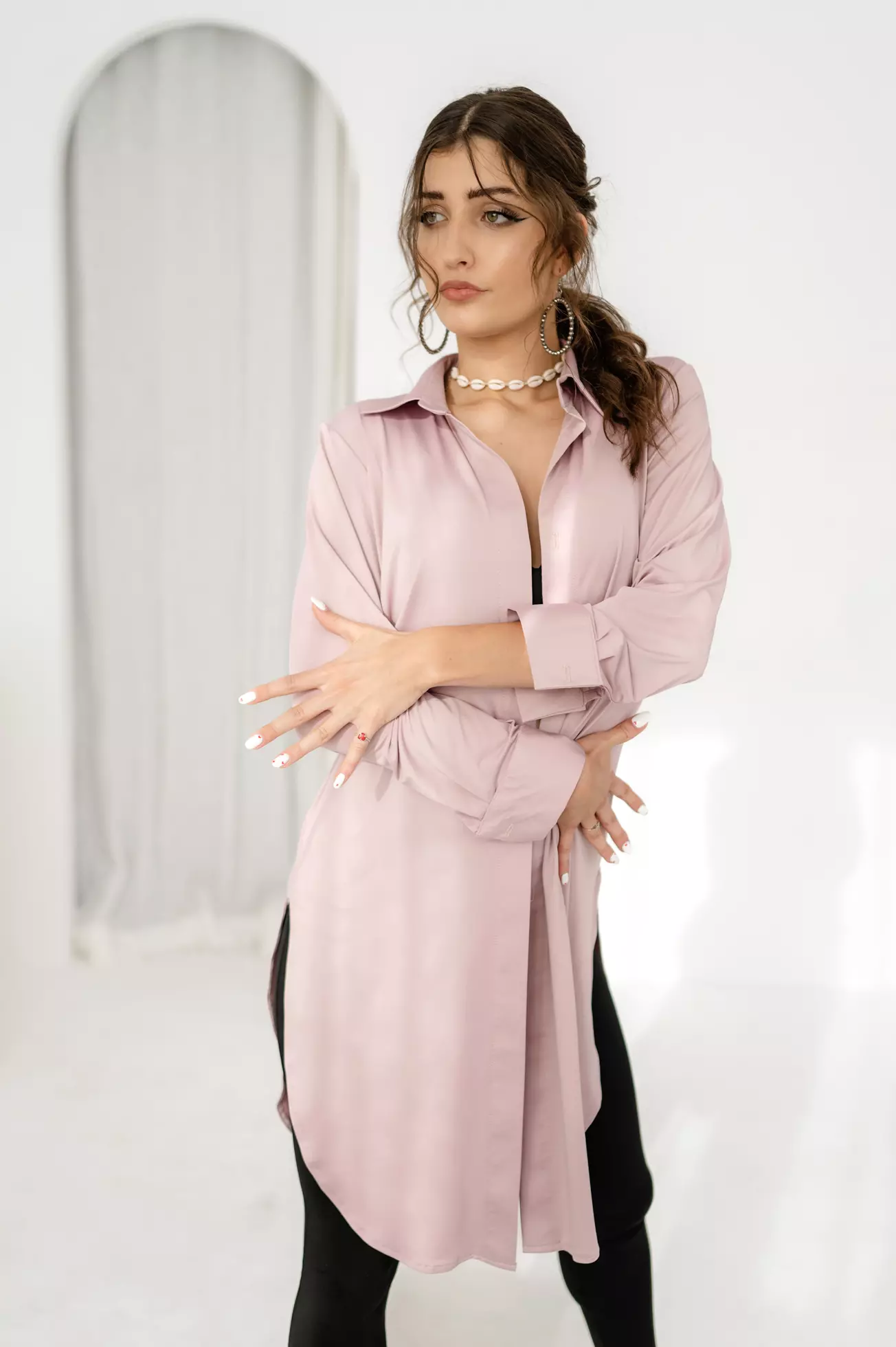
Section 2: Building Your Practice Wear Wardrobe
Now that you understand the importance of dedicated practice dance wear, it’s time to start building your wardrobe! This section guides you through the essential pieces that form the foundation of a functional and versatile dance closet. We’ll cover the basics like leotards and tights, discuss layering options for warm-ups and cool-downs, and delve into the importance of choosing the right fabrics. Let’s create a collection of practice dance wear that will keep you comfortable, supported, and ready to move!
2.1 The Basics: Leotards and Tights
When it comes to foundational practice dance wear, leotards and tights are essential items for many dance genres, particularly ballet. These two garments provide a streamlined, supportive base layer that allows for unrestricted movement and a clear view of the body’s lines.
- Leotards:
- Provide a snug, comfortable fit that moves with your body.
- Allow instructors to easily see and correct your posture and alignment.
- Come in various styles, including tank, cap sleeve, long sleeve, and halter neck, offering options for different preferences and weather conditions.
- Fashion Dance offers a wide variety of leotards in different styles, colors, and fabrics to suit every dancer’s needs.
- Tights:
- Offer warmth, support, and a smooth line under leotards and skirts.
- Typically made from nylon or spandex blends for stretch and durability.
- Come in various colors, though pink or flesh tones are standard for ballet.
- Footed, footless, and convertible tights offer different levels of coverage and versatility.
Together, leotards and tights create a classic and functional dance outfit that forms the basis of many practice looks. They are essential dancewear items that provide both comfort and a clean aesthetic, allowing you to focus on your technique without distractions.
2.2 Layering for Warm-ups and Cool-downs
Layering is a crucial aspect of dance practice, allowing you to adjust to changing temperatures and keep your muscles warm before, during, and after class. Warm-up gear is essential for preparing your body for the demands of dance and preventing injuries.
Here are some popular layering options for dancers:
- Dance jackets:
- Fitted styles provide warmth without restricting movement.
- Often made from fleece, lightweight knits, or performance fabrics.
- Fashion Dance offers a selection of stylish and functional dance jackets designed to keep you warm and comfortable.
- Leg warmers:
- Keep your leg muscles warm and pliable, especially important in ballet.
- Come in various lengths, from ankle to thigh-high.
- Made from knitted fabrics like wool, acrylic, or cotton blends.
- Sweaters and cardigans:
- Provide an extra layer of warmth over leotards or other dance tops.
- Choose styles that are easy to take on and off as needed.
- Hoodies and sweatshirts:
- A comfortable option for hip-hop and other street styles.
- Can be worn before and after class or during breaks.
Layering options allow you to regulate your body temperature throughout your practice session. You can start with multiple layers to warm up your muscles, gradually remove layers as you get warmer, and then add them back on during cool-downs to prevent stiffness. Choosing the right warm-up gear is essential for preparing your body for dance and ensuring a safe and effective practice.
2.3 Choosing the Right Fabrics
Selecting the right fabrics is crucial when building your practice dance wear wardrobe. The fabric of your dance clothes directly impacts your comfort, performance, and the longevity of the garment. Prioritizing breathable fabrics and moisture-wicking materials will help you stay cool, dry, and focused during even the most intense dance sessions.
Here’s a breakdown of fabrics to consider:
Breathable Fabrics:
- Mesh: Provides excellent ventilation and airflow, making it ideal for areas prone to sweating.
- Cotton blends: Offer breathability and softness, but choose blends with synthetic fibers for better moisture management.
- Performance fabrics: Many brands, including Fashion Dance, utilize specialized performance fabrics designed for athletic wear. These often feature blends of nylon, polyester, and spandex for optimal breathability and stretch.
Moisture-Wicking Materials:
- Polyester: A synthetic fiber known for its moisture-wicking properties and durability.
- Nylon: Another synthetic option that wicks away sweat and dries quickly.
- Specialty fabrics: Some brands offer fabrics with specific moisture-wicking technologies, often indicated by trademarked names.
When choosing fabrics, consider the following:
- Climate: If you live in a hot, humid climate, prioritize breathability and moisture-wicking.
- Dance style: High-intensity dance styles may require more advanced moisture-wicking fabrics.
- Personal preference: Some dancers prefer the feel of natural fibers like cotton, while others prefer the performance benefits of synthetics.
Choosing comfortable and durable dancewear starts with selecting the right fabrics. By prioritizing breathability and moisture-wicking, you can ensure that your practice dance wear keeps you feeling fresh, comfortable, and focused on your technique.
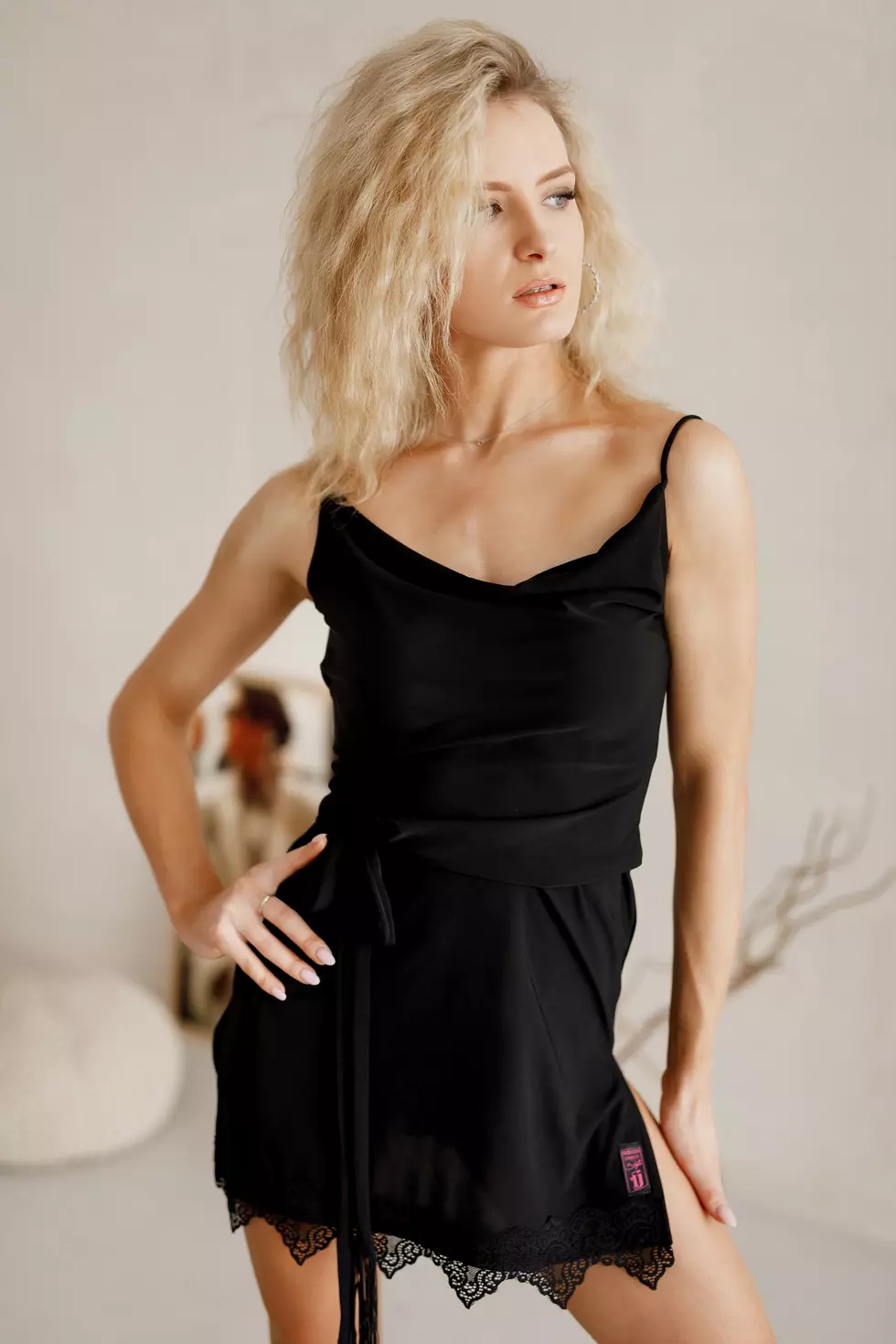
Section 3: Practice Wear for Different Dance Styles
While the basic principles of comfort and functionality apply to all dance genres, different styles often call for specific types of practice dance wear. This section explores the unique needs of ballet, jazz/contemporary, and hip-hop, providing recommendations for creating practice outfits that are both practical and stylish. Let’s explore how to tailor your practice dance wear to suit the demands of your chosen dance form!
3.1 Ballet
Ballet, with its emphasis on precise movements and elegant lines, requires practice wear that allows for a full range of motion while providing a streamlined silhouette. Ballet practice wear typically consists of classic, form-fitting garments that allow instructors to observe and correct a dancer’s posture and alignment.
Here’s a typical ballet practice outfit:
- Leotard: A foundational garment, often in black, pink, or other solid colors. Fashion Dance offers a beautiful array of leotards in various styles and colors, perfect for any ballet class.
- Tights: Pink or flesh-toned tights create a smooth, unbroken line from the waist to the toes.
- Skirt: A sheer or mesh wrap or pull-on skirt can add a touch of elegance and flow to movements.
- Warm-up gear: Leg warmers, knit sweaters, or a fitted dance jacket are essential for keeping muscles warm before and after class.
Ballet practice wear should be comfortable and functional, but also aesthetically pleasing. The clean lines and simple elegance of traditional ballet attire contribute to the overall grace and beauty of the dance form. When choosing your ballet practice wear, look for pieces that are well-made, fit properly, and allow you to move freely and confidently.
3.2 Jazz/Contemporary
Jazz and contemporary dance, with their dynamic movements and expressive styles, require practice dance wear that is both versatile and comfortable. These genres often blend elements of ballet with more modern styles, resulting in a wider range of acceptable attire.
Here are some common elements of jazz dancewear and contemporary dancewear:
- Leotards or fitted tops: Provide a supportive base layer and allow for a full range of motion.
- Jazz pants or leggings: Offer flexibility and comfort. Jazz pants, often bootcut or flared, create a flowing line, while leggings provide a more streamlined look.
- Dance shorts: Can be worn over a leotard or with a fitted top, offering breathability and freedom of movement.
- Unitards: A popular choice for contemporary dance, providing a sleek, all-in-one solution.
Versatile practice clothing is key for jazz and contemporary, as these styles often involve floor work, leaps, and turns. Choose pieces that can be mixed and matched to create different looks and that allow you to move freely and expressively. Fashion Dance offers a wide array of jazz and contemporary dancewear that combines comfort, style, and functionality. You can easily find tops, bottoms, and one-pieces that suit your individual needs and preferences.
3.3 Hip-Hop
Hip-hop dance, with its energetic, rhythmic, and often improvisational style, calls for practice dance wear that is comfortable, allows for a wide range of motion, and reflects the urban roots of the dance form. Hip-hop dancewear often mirrors streetwear trends, prioritizing both functionality and fashion.
Key elements of hip-hop dancewear include:
- Loose-fitting clothing: Baggy t-shirts, hoodies, and sweatpants are staples of hip-hop style, allowing for unrestricted movement and a relaxed aesthetic.
- Comfortable streetwear: Many hip-hop dancers incorporate elements of streetwear into their practice wear, such as graphic tees, cargo pants, and stylish sneakers.
- Crop tops and tank tops: These offer breathability and a stylish look, often paired with baggy pants or shorts.
Fashion Dance recognizes the unique needs of hip-hop dancers and offers a range of comfortable and stylish options. When choosing your hip-hop practice wear, consider these factors:
- Freedom of movement: Ensure your clothing allows you to execute all movements without restriction.
- Breathability: Choose fabrics that will keep you cool and comfortable during intense practice sessions.
- Personal style: Hip-hop is all about individuality, so choose pieces that reflect your personality and make you feel confident.
The right hip-hop dancewear will not only allow you to move freely but also help you embody the attitude and energy of this dynamic dance style.
Conclusion
Choosing the right practice dance wear is an essential part of any dancer’s journey. By creating a functional dance wardrobe filled with essential practice wear items, you’re setting yourself up for success in every class and rehearsal. Remember to prioritize comfort, freedom of movement, and breathability when selecting your dance practice outfits. Whether you’re drawn to the classic elegance of ballet, the dynamic energy of jazz and contemporary, or the expressive freedom of hip-hop, the right practice wear will enhance your performance and allow you to fully embrace the joy of dance. So, invest in quality pieces, care for them well, and get ready to dress for dance success!
For a more detailed guide on choosing the best practice wear for your needs and dance style, check out our comprehensive article on Dance Practice Wear: Comfort and Style for Every Move.
What is the best way to wash and dry different types of dancewear fabrics?
Proper washing and drying techniques are essential for maintaining the quality and extending the life of your dance practice wear. Incorrect care can lead to shrinkage, fading, loss of elasticity, and damage to delicate fabrics. Always check the care label on each garment for specific instructions. Different fabrics and embellishments may require different care.
General Guidelines:
Hand washing is often the gentlest method, especially for delicate items like leotards with embellishments or mesh details. Use cold water and a mild detergent specifically designed for activewear or delicate fabrics. Gently swish the garment in the water, paying extra attention to areas that may have absorbed sweat. Avoid harsh scrubbing or wringing. If machine washing is recommended, use a gentle cycle with cold water and a mild detergent. Place delicate items in a mesh laundry bag to prevent snagging. Wash dark colors separately from light colors to prevent color bleeding. Avoid using bleach or fabric softener, as these can damage the fibers and elasticity of your dancewear.
Drying:
Air drying is the best method for most dancewear, as it prevents shrinkage and damage from heat. Lay flat to dry on a clean towel or hang to dry, avoiding direct sunlight. If the care label allows for tumble drying, use a low heat setting and remove promptly to prevent wrinkles.
Fabric-Specific Considerations:
Lycra/Spandex: Wash in cold water, avoid bleach and fabric softener. Air dry is best.
Nylon: Wash in cold or warm water. Air dry or tumble dry on low.
Polyester: Wash in warm water. Air dry or tumble dry on low.
Cotton: Can withstand higher washing temperatures but may shrink. Wash in cold or warm water. Air dry or tumble dry on low.
Mesh: Wash in cold water, preferably by hand. Air dry.
Rayon/Modal/Bamboo: Wash in cold water on a gentle cycle or by hand. Air dry is best.
Embellishments:
Garments with sequins, rhinestones, or other embellishments should be washed with extra care. Hand washing is often recommended. Turn the garment inside out before washing to protect the embellishments.
By following these guidelines and paying attention to the specific care instructions for each fabric, you can help ensure that your dance practice wear stays in great condition, ready for many practices to come.
How can I make my dance practice wear last longer?
Making your dance practice wear last longer is not only cost-effective but also better for the environment. Proper care is key to extending the lifespan of your dancewear. Here are some tips to help you get the most out of your dance practice clothes:
Wash Properly: Follow the care instructions on the garment label. Use cold water and a mild detergent. Hand washing is the gentlest method, but if you machine wash, use a gentle cycle and a mesh laundry bag for delicate items. Avoid using bleach or fabric softeners as they can damage the fabric and elastic.
Dry Carefully: Air drying is the best way to preserve the shape and elasticity of your dancewear. Lay garments flat or hang them to dry, avoiding direct sunlight which can fade colors. If you must use a dryer, use a low-heat or no-heat setting.
Rotate Your Wardrobe: Don’t wear the same leotard or leggings to every practice. Rotating your dancewear allows each garment to rest and recover its shape between uses, extending its lifespan.
Rinse After Sweating: If you’ve had a particularly sweaty practice, rinse your dancewear in cold water immediately afterward to remove sweat and prevent odors from setting in.
Store Properly: Store your clean, dry dancewear in a cool, dry place. Avoid overcrowding your drawers or closet, as this can cause wrinkles and damage delicate fabrics. Fold or hang items neatly to maintain their shape. Consider using breathable garment bags for special occasion or delicate pieces.
Address Repairs Promptly: If you notice a small tear, loose seam, or missing embellishment, address it right away. Prompt repairs can prevent minor issues from becoming major problems.
Avoid Over-Washing: While it’s important to keep your dancewear clean, over-washing can also contribute to wear and tear. Wash your dancewear only when necessary, and consider airing out garments between uses if they are not heavily soiled.
Use a Gentle Detergent: Opt for a mild detergent specifically designed for activewear or delicate fabrics. These detergents are formulated to effectively clean synthetic fibers without causing damage.
Be Mindful of Zippers and Fasteners: When washing and storing dancewear with zippers or other fasteners, make sure they are closed to prevent snagging on other garments.
By following these tips, you can significantly extend the life of your dance practice wear, keeping it looking and performing its best for many practices and performances to come. This will save you money in the long run and reduce the environmental impact of frequently replacing your dance wardrobe.
What are some tips for organizing my dance practice wear?
Organizing your dance practice wear can save you time and frustration, making it easier to find what you need and keep your dance wardrobe in good condition. Here are some tips for keeping your dancewear neat and accessible:
Sort by Category: Start by sorting your dancewear into categories, such as leotards, tights, tops, bottoms, skirts, warm-up gear, and accessories. This will help you quickly locate specific items.
Use Drawer Dividers: Drawer dividers are a great way to keep smaller items, like tights, socks, and hair accessories, separated and organized within drawers. You can also use them to separate different types of leotards or tops.
Color-Coordinate: Consider organizing your dancewear by color within each category. This can make it easier to find matching pieces or create specific color combinations for practice.
Fold Neatly: Fold your leotards, tops, and bottoms neatly to prevent wrinkles and maximize space. There are various folding techniques you can use, such as the KonMari method, to create compact and tidy stacks.
Hang Strategically: Hang items that are prone to wrinkling, such as skirts and dresses. Use padded hangers to prevent shoulder bumps or distortion. You can also hang frequently used items, like warm-up jackets or cardigans, on hooks for easy access.
Utilize Vertical Space: Make the most of your closet space by using hanging organizers with shelves or compartments. These are great for storing shoes, accessories, or folded items.
Store Shoes Properly: Keep your dance shoes in a designated area, such as a shoe rack, hanging organizer, or clear plastic boxes. This will protect them from dust and damage and make it easy to find the right pair for each practice.
Label Bins and Drawers: If you use bins or drawers to store your dancewear, label them clearly so you can easily identify the contents. This is especially helpful if you have multiple dancers in your household.
Keep a Separate Bag for Essentials: Pack a separate dance bag with essential items like your dance shoes, a water bottle, a towel, and any other items you need for every practice. This will save you time when you’re getting ready for class
Rotate Seasonally: If you have dancewear that you only wear during certain seasons, such as warm-up gear for colder weather, consider storing it separately during the off-season to free up space in your main dance wardrobe.
Declutter Regularly:
Periodically go through your dance practice wear and get rid of any items that are worn out, no longer fit, or that you no longer wear. This will prevent your dance wardrobe from becoming overcrowded and make it easier to find the items you need.
By implementing these organization tips, you can create a functional and efficient system for storing your dance practice wear, ensuring that you’re always prepared for class and can easily find what you need to look and feel your best.
How do I choose the right size for dance practice wear, especially when ordering online?
Finding the right fit for dance practice wear is crucial for both comfort and performance. Ill-fitting garments can restrict your movement, cause discomfort, and even lead to injury. Here’s a guide to finding the right fit, especially when ordering online:
Every brand has its own sizing system, so it’s essential to refer to the specific size chart provided for each item. Don’t rely on your usual clothing size, as dancewear sizes can differ significantly. Size charts typically provide measurements for bust, waist, hips, and inseam. Use a flexible measuring tape to measure yourself accurately. For the bust, measure around the fullest part, keeping the tape level. For the waist, measure around the narrowest part, usually just above your belly button. For the hips, measure around the fullest part, keeping the tape level. For the inseam, measure from the crotch seam to the bottom of your ankle. For the girth, measure from the center of one shoulder, down the front of your body, through the crotch, and up the back to meet the starting point. It’s often helpful to have someone else assist you with taking measurements.
Different styles of dancewear are designed to fit differently. Leotards and unitards should fit snugly, while jazz pants might be looser. Pay attention to the fabric composition. Fabrics with a higher percentage of Lycra/Spandex will offer more stretch and a closer fit. If available, read customer reviews to see if the item runs true to size, small, or large. Look for comments about the fit and comfort of the garment. Different body types may find certain styles more flattering or comfortable than others. For example, if you have a long torso, you might need to size up in leotards or look for brands that offer tall sizes.
When ordering online, always check the retailer’s return policy before making a purchase. Make sure you understand the process for returning or exchanging items that don’t fit properly. Choose brands that are known for their quality and fit in dancewear. Reputable brands often have more detailed size charts and better customer service. If you’re between sizes, it’s generally better to size up, especially for fitted garments like leotards. You can always have a garment taken in if it’s slightly too large, but it’s much harder to make a too-small garment fit comfortably. Once you receive your order, try it on immediately and move around. Do some stretches, bends, and dance movements to ensure the garment allows for a full range of motion without any restrictions or discomfort.
By following these tips, you can increase your chances of finding the right fit for your dance practice wear, even when ordering online. Remember that comfort and freedom of movement are paramount, so prioritize finding garments that allow you to dance your best.
Are there any eco-friendly or sustainable options for dance practice wear?
Yes, there are growing options for eco-friendly and sustainable dance practice wear, driven by increasing awareness of the environmental impact of the fashion industry. These options focus on using sustainable materials and ethical production practices.
Many brands are starting to incorporate recycled materials into their dancewear lines. This includes fabrics made from recycled plastic bottles, fishing nets, and other post-consumer waste. These materials help reduce waste and conserve resources. Some brands use organic cotton which is grown without the use of harmful pesticides and fertilizers. This is a more sustainable option than conventional cotton, which is often grown with intensive use of chemicals. Bamboo is another popular choice for eco-conscious dancers. It is a fast-growing, renewable resource that requires less water and pesticides than cotton. Bamboo fabric is also known for its softness, breathability, and moisture-wicking properties. Tencel (Lyocell) is a fabric made from sustainably sourced wood pulp. It’s known for its softness, drape, and moisture-wicking properties, making it a good choice for dancewear.
Beyond materials, consider the production practices of the brands you choose. Look for brands that are transparent about their supply chains and manufacturing processes. Some brands prioritize local production to reduce transportation emissions and support local economies. Others focus on minimizing waste in their production processes, such as using pattern-cutting techniques that reduce fabric scraps.
Look for certifications that indicate a commitment to sustainability. For example, GOTS (Global Organic Textile Standard) certification ensures that organic fibers are used and that environmental and social criteria are met throughout the supply chain. OEKO-TEX Standard 100 certifies that textiles are free from harmful substances.
Durability is another important factor in sustainability. Investing in high-quality dancewear that is built to last will reduce the need for frequent replacements. Proper care, such as washing in cold water and air drying, can also extend the lifespan of your garments.
Consider secondhand options for dance practice wear. Shopping at thrift stores, consignment shops, or online marketplaces can be a great way to find affordable and sustainable dancewear.
By choosing eco-friendly and sustainable dance practice wear, you can minimize your environmental impact and support brands that are committed to ethical and responsible practices. While the options are still growing, the increasing availability of sustainable dancewear demonstrates a positive shift in the industry, offering dancers a way to align their passion for dance with their values.
